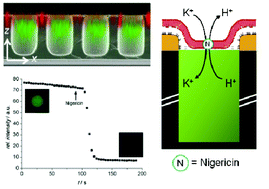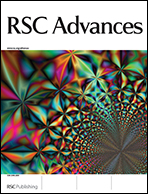In situ generation of electrochemical gradients across pore-spanning membranes†
Abstract
Silicon substrates with cavities in the micrometre range were micro-fabricated and appropriately functionalized to allow for the generation of pore-spanning membranes (PSMs) sealing the pore cavities. PSMs were either formed by applying


 Please wait while we load your content...
Please wait while we load your content...